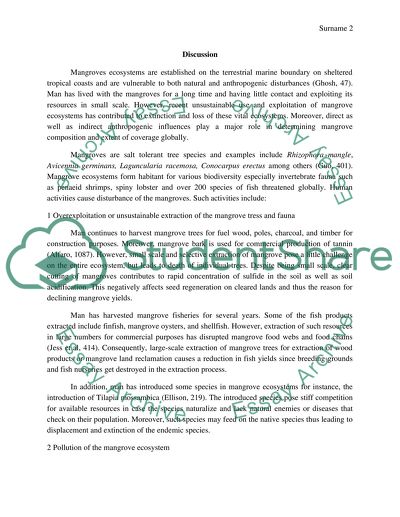Cite this document
(“Anthropogenic Impact on Mangrove Ecosystems Term Paper”, n.d.)
Retrieved from https://studentshare.org/environmental-studies/1463569-anthropogenic-impact-on-mangrove-ecosystems
Retrieved from https://studentshare.org/environmental-studies/1463569-anthropogenic-impact-on-mangrove-ecosystems
(Anthropogenic Impact on Mangrove Ecosystems Term Paper)
https://studentshare.org/environmental-studies/1463569-anthropogenic-impact-on-mangrove-ecosystems.
https://studentshare.org/environmental-studies/1463569-anthropogenic-impact-on-mangrove-ecosystems.
“Anthropogenic Impact on Mangrove Ecosystems Term Paper”, n.d. https://studentshare.org/environmental-studies/1463569-anthropogenic-impact-on-mangrove-ecosystems.


